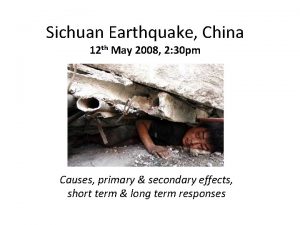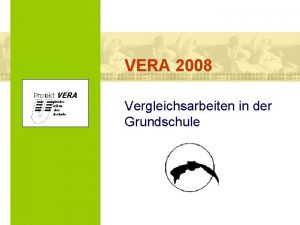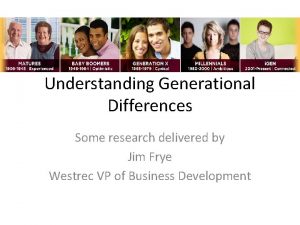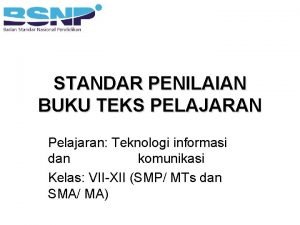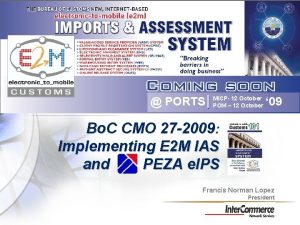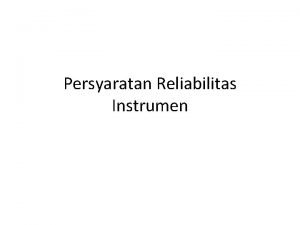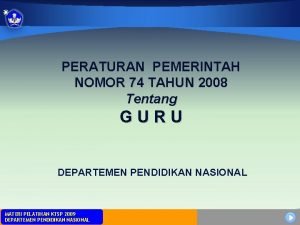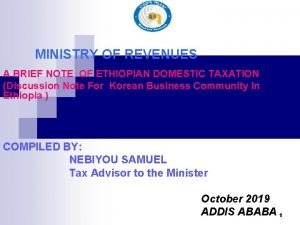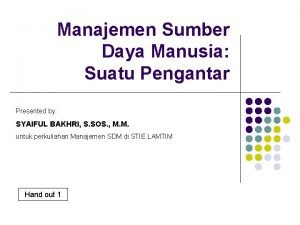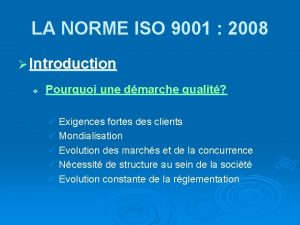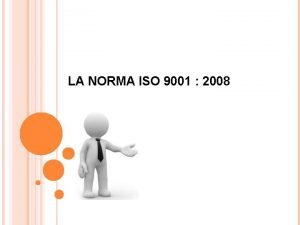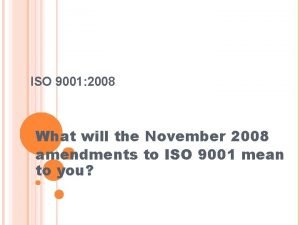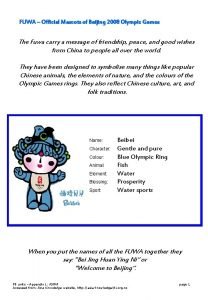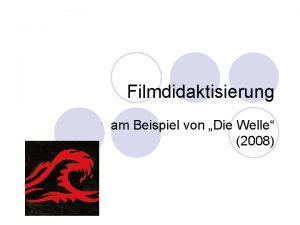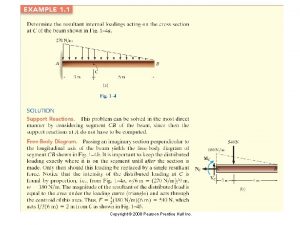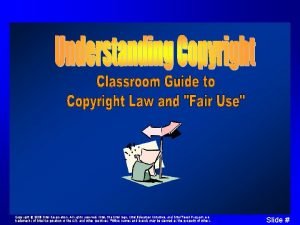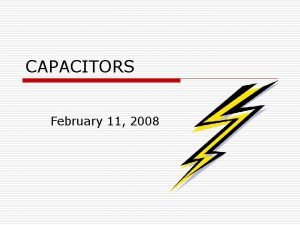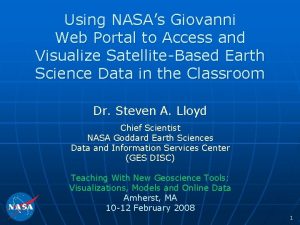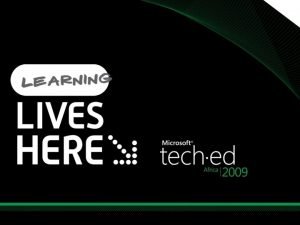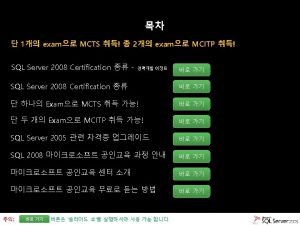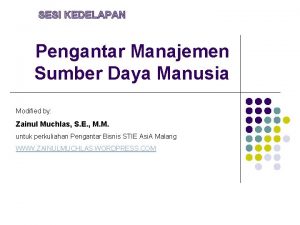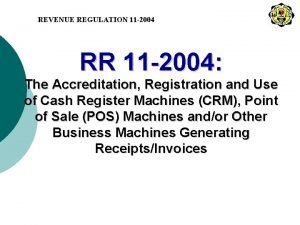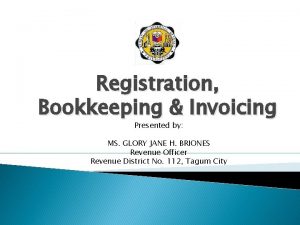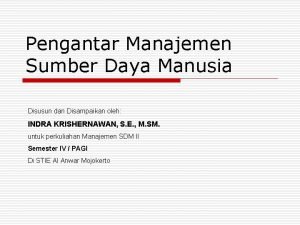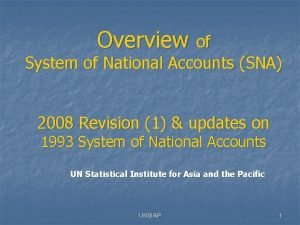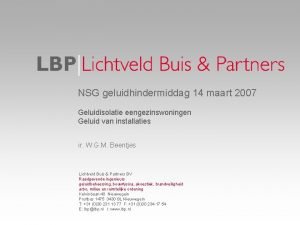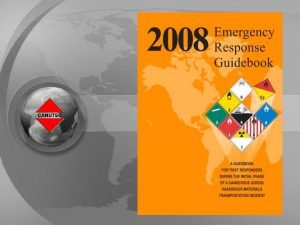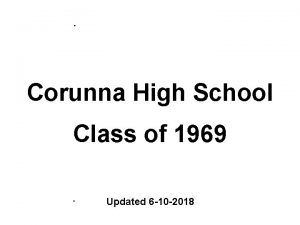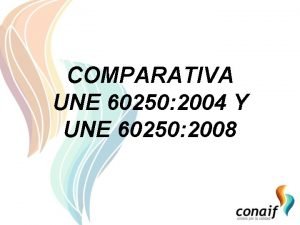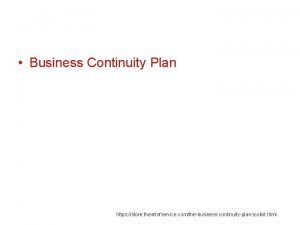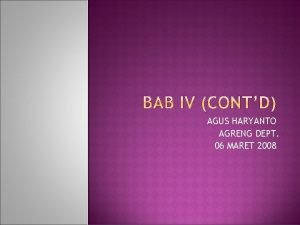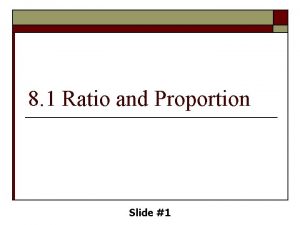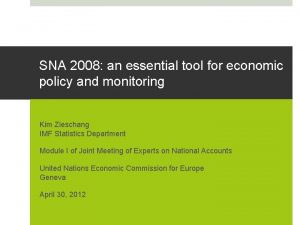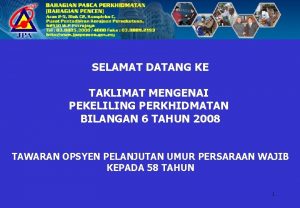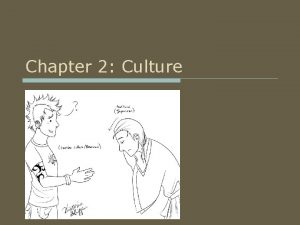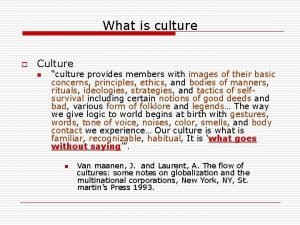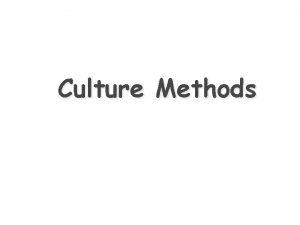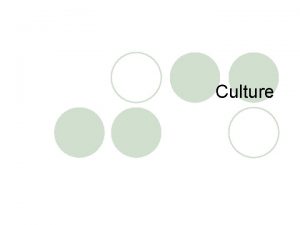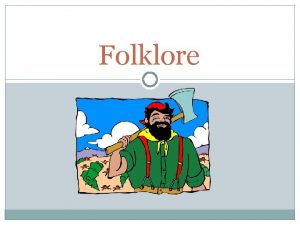Culture Theory May 2008 Chapter 2 Culture Theory
































































































- Slides: 96

Culture Theory May 2008 Chapter 2

Culture Theory (CT) Chapter 2 • • Impact on Safety Risk View Interaction with other Groups World View

Cultural Theory • Mary Douglas • Anthropologist • Observation of Societies – Threats – Social Structures – Ways of Life – Attitudes

Culture • Studied Life and Cultural Biases – Functional Explanation – Social Biases – Argued two principle axes: • Grid and Group


Risk by Culture:


Corporate Views

Views

Cultural Theory • Group: Degree of division between insiders and outsiders • Grid: (Regulation) Rules that relate one individual to another Regulation Group

Examples • Strong Grid /Strong Group (High) – Individuals Regulated for the sake of the group. – Heirarchist

Views of Nature • Fragile • Robust • Capricious (Erratic, impulsive, unpredictable)

Strong Grid, Strong Group • Roles are subscribed – gender and birth • Positional Rules • Groups are within larger groups Bernstein: Two family Examples: Modern Japanese British Middle-class Family

Hierarchist • • Social Sectors: Classes, castes, age groups Specialized Roles Larger and lasts longer Less internal conflict Well defined rules Experts Reliance on rules Regulation Tolerant within limits Group

Individuals • Group (Low) Grid/Regulation (Low) – Individuals than group – Lack of group mentality – Social classes negotiable – Transaction and transfer freely – Political laws to regulate individuals – Trial and error

Egalitarian • • High Group, Low Grid Strong bond Voluntary Associations Good of Group before individual Sensitive to high consequence risk Nature Fragile Small change will bring crashing down

Isolationist (fatalist) • • • High Reg, Low group Feel isolated Nature as random Little they can do No respect for other groups Random!

Hermit (Autonomous) • • Medium/Medium Withdraws from social interaction Autonomous Often ignored

Nature Views Random! Stable Tolerant within limits Fragile

Risk • Different Levels of Risk Views – Risk Adverse – Risk Procedures (Regulation) – Risk Takers – Risk Acceptors

Risk • Culture Theory can be used to predict risk responses – Risk Issues – Grid Coordinates

Risk Acceptances s e ur ed c o r P k s Ri r sk i R ke a T Risk Adverse

Nature Capricious t us b Ro Nature Fragile

Fatalist View points Share Adverse

No respect High Accept authority Fatalist Glorify risk/acceptance ISO. s iou re c pri ca tu Na d ri De ty afe re ltu es High bond Robust Hier. cu es er th ro s up o r g t fo c pe Regulation r No Risk adverse Hermit Na tu Ri re sk Reject hier. knowledge Nature Robust Trend setters Indiv. Low Egal. Competition Risk Takers Low Nature Fragile Weak leadership Group Risk Adversion High

Grid • • Coarse Grained Static Rests on hidden assumptions No Accounting for change

GRID EXERCISE Mountain Utilities wants to construct a 300 Megawatt Reactor in Gentle Valley to supply the electrical needs of the community. This community of people has Grown to over 400, 000 strong. Up to this point, the community has relied on other Power generating systems for their needs. If this was a hierarchal community, what would you expect would be their expectations? Concerns? Worries?

GRID EXERCISE #2 The thriving metropolis of Getter Done is made up mostly of Engineers And Ph. Ds. They have worked together for near 20 years in all kinds of Endeavors. An overseas company in conjunction with the NASA want to Establish a new antimatter storage and transfer system to support a new space Craft. The facility will store 100 cubic meters (100 m 3) of antimatter in pods Constructed of polyduranium. The leak rate of the tank is expected To be only <0. 0002 kg/day. How will the community respond?

Cultural Theory Grid • Uses: – Predict Risk Behavior? – Individual Behavior? – How they are in cultural roles

Our Organizations • Location on the Grid • Definitions – what does that mean? • Discussion.

Other Characteristics • Individual Characteristics – Gender – Race – Political Ideology – Personality Type

Biases • • Superiority of any Group? Limitations of the Groups Accuracy of the Group Each as a one view?

One View HH Servants Military Japan U. S? India Communal Sect Leaders

Example:


Canadian Website • Safety Management Systems – Models – Related to Grid? – View on Risk?

Risk Models 4 14 8 9 7 Ab Dams 16 18 Nuclear Energy Marine Transport an do n ct 5 6 12 Space ri st Re DNA Research 4 1 2 3 Coupling 10 2 Complexity 6 8 10 To l & era te Im pr ov e Mining Flying 20

Zero Risk Model

Nanotechnology • • • Carcinogenic Effects Long Term effects – Unknown Quantum Dots Single-wall Nanotubes MSDSs – Focus on materials not product

Safety & Health Aspects of Nanotechnology From EPA White Paper on Nanotechnology

Safety & Health Aspects of Nanotechnology Where are We? ESH Coverage Nanotechnology 2 nd Generation 2001 2003 3 rd Gen 4 th Gen 2006 2015

Safety Culture Theories

ISO 9001

Risk Matrix

Basic Hazard Management

Relationships • • Related to Grid Accountability: High /High Training: High Threat - View of nature and risk

Bow-Tie

System Risk

Thompson & Wildavsky Grid

Culture and Socialization

Risk Management Policy

Risk… Cyclone at Myanmar • 100, 000 Dead

Risk… Chilean Volcano

Application of CT What is the response of each Culture?

Application of CT

Application of CT

Application of CT

Understanding CT • • Management Policy Signage Training Communication

Application

Class Exercise, Grid • Where is your organization?

Break!

Social Amplification of Risk

Amplification • Risk – Actual Risk – Perceived Risk – Residual Risk – Risk Abatement

Amplification

Risk Analysis • Risk Linear?

Social Amplification of Risk • Transfer of Information • Social Response Mechanism

SARF • Risk – Benefit Analysis

Bell-Wether Events • Three Mile Island – Changed attitudes – Stricter Regulation – Public opposition (any technology)

Effects… • Move away (Globally) from Nuclear Power • Increased public concern on complex systems. • Public opposition to Nuclear power

Amplification Results in: • Economic - Move away from nuc power. • Judicial (New laws, regulations) • Social - Anti-nuclear groups

Other Events? bhopal Columbia Piper Alpha

Other Effects: • Attenuation of Risk – Radon – Smoking – Carcinogens

Social Amplification of Risk • Media? • News/Books? • Special Interest Groups?

SARF Increased Event Risk Decrease Filter 1 Decrease Filter 2 Elements? Chapter 2, section 2. 3. 2

SARF Communication Increased Event Risk Filter 1 Politics Risk Filter 2 Media

SARF • Transfer of information about Risk • Social Response mechanism COMMUNICATION!

SARF • Ripple Effect – True Risk? – Media – Politics

Four Risk Pathways • • Heuristics and Values - Simplify Group Relationships – influence responses Signal value – recognize high value Stigmatization – Create aversion

CT and Risk Interpret Formulate Validate Risk

High Signal Values • Outcome of the risk activity/operation • Public Reaction – a measure of signal

Signals • Radiation • Cancer • Fire

Debates • Provides information • Can cause Public Concern!

Seven Categories • • • Biocidal hazards Persistent delay hazards Rare Catastrophes Life-threatening Common Global Diffuse Rad hazards

Basic Risk Perception Model • BRPM, 2001 • Focuses on psychometric dimensions – Attitude, fear, worry, risk sensitivity, trust – Lifestyles, and world views.

Illustrative Interventions • Motorists and seat-belts – Likelihood of accidents – Consequence: killed or injured in crash

Risk Takers • Individual Differences • Thrill seekers • Sensation Seeking – (age, gender)

Political Approach to Risk • • Social Life Conflicting Goals Values, Chronic fear

Politics • Policy: risks…

Risk Resolution • Risk Resolution versus Risk Management • • Regulation Restriction Control Government Program

Regulation European Commission Questionnaire on Directive 96/82/EC on the Control of Major Accident Hazards involving dangerous substances (SEVESO II) 2000 – 2002: United Kingdom Response

View of Risk • • Risk Management is about Power Conflicts of interest Political Influence • Page 49, Text

Social-Emotional Risk • Risk = hazard + outrage – Cognitive side of Fear!

Risk and Technology • Modern Technology - Ritual Sacrifice

Three Acts • 1. Sudden – Bhopal • 2. Science response – Thalidomide • 3. Political – Ozone depletion, global warming

Adaptation and Risk Management • Cost-Benefit analysis • Behavior Adaption approach • Risk Management Approach

Rewarding/Incentives • Management Vigor – Continuous reminders • Reward the bottom line. • Reward attractiveness • Progress safety credits • List on Page 56
 2008 2008
2008 2008 12th may 2008
12th may 2008 Hci design patterns
Hci design patterns Example of material culture
Example of material culture Individual culture traits combine to form culture patterns.
Individual culture traits combine to form culture patterns. Batch culture vs continuous culture
Batch culture vs continuous culture Continuous culture and batch culture
Continuous culture and batch culture Collectivistic cultures
Collectivistic cultures Difference between american and indian culture
Difference between american and indian culture Stab culture and stroke culture
Stab culture and stroke culture Folk culture and popular culture venn diagram
Folk culture and popular culture venn diagram Sub culture group
Sub culture group Popular culture examples
Popular culture examples Indole test
Indole test Homework due today
Homework due today Adaptive culture from inert culture
Adaptive culture from inert culture Pour plate method
Pour plate method Carpet culture method
Carpet culture method Quality culture vs traditional culture
Quality culture vs traditional culture Surface culture deep culture and esol
Surface culture deep culture and esol Ipam server 2008
Ipam server 2008 2008-2009 school year
2008-2009 school year After warhol double mona lisa peanut butter and jelly
After warhol double mona lisa peanut butter and jelly Vera 2008
Vera 2008 Upgrade 2003 to 2008
Upgrade 2003 to 2008 2008 generation called
2008 generation called Urip purwono, 2008 standar penilaian buku pelajaran
Urip purwono, 2008 standar penilaian buku pelajaran Ssis 2008 training
Ssis 2008 training 2008 in roman numerals
2008 in roman numerals Pienurakkasopimus ehdot
Pienurakkasopimus ehdot Classification of algae by lee 2008
Classification of algae by lee 2008 Cmo 27-2009
Cmo 27-2009 Sukardi 2008
Sukardi 2008 Pp no 74 tahun 2008 tentang guru
Pp no 74 tahun 2008 tentang guru Gurus da qualidade juran
Gurus da qualidade juran Nom 001 stps 2008 edificios locales e instalaciones
Nom 001 stps 2008 edificios locales e instalaciones Tujuan fungsional msdm
Tujuan fungsional msdm Stamp duty(amendment) proclamation no. 612/2008
Stamp duty(amendment) proclamation no. 612/2008 Copyright 2008
Copyright 2008 Www.middleschoolscience.com 2008
Www.middleschoolscience.com 2008 Lingkungan msdm (mondy 2008)
Lingkungan msdm (mondy 2008) Pearson education limited 2008
Pearson education limited 2008 Acuerdo gubernativo 226-2008
Acuerdo gubernativo 226-2008 T. trimpe 2008 http //sciencespot.net/
T. trimpe 2008 http //sciencespot.net/ Norme iso 9001 2008
Norme iso 9001 2008 Norma iso 9001: 2008
Norma iso 9001: 2008 Hendl 2008
Hendl 2008 Iso 9001:2008 certification in mumbai
Iso 9001:2008 certification in mumbai Ieee standard 829
Ieee standard 829 Fuwa mascots beijing 2008
Fuwa mascots beijing 2008 Gegensätzliche charaktereigenschaften
Gegensätzliche charaktereigenschaften Pearson education inc publishing as pearson prentice hall
Pearson education inc publishing as pearson prentice hall Pearson prentice hall
Pearson prentice hall 2008 pearson prentice hall inc
2008 pearson prentice hall inc Copyright 2008
Copyright 2008 Rm 375-2008-tr
Rm 375-2008-tr Middle school 2007 fashion
Middle school 2007 fashion February 11 2008 calendar
February 11 2008 calendar Camtasia flv
Camtasia flv Fbő képzés
Fbő képzés Autodesk inventor 2008
Autodesk inventor 2008 Implasyon tula
Implasyon tula Proposta razoável para indemnização do dano corporal
Proposta razoável para indemnização do dano corporal C++ mvp
C++ mvp 12.02.2008 nasa
12.02.2008 nasa Dts sql server 2005
Dts sql server 2005 Sql server 2008 certification
Sql server 2008 certification Lingkungan msdm (mondy 2008)
Lingkungan msdm (mondy 2008) Rr 11-2005
Rr 11-2005 Resultados icfes 2008
Resultados icfes 2008 Rmc 82-2008
Rmc 82-2008 Harvard anglia 2008
Harvard anglia 2008 Perda no 2 tahun 2008
Perda no 2 tahun 2008 Pengantar manajemen sdm
Pengantar manajemen sdm System of national accounts (sna)
System of national accounts (sna) Giw/isso 2008
Giw/isso 2008 Nasa june 19 2008
Nasa june 19 2008 Sql server 2005 management studio express
Sql server 2005 management studio express Copyright 2008
Copyright 2008 Fungsi msdm menurut mondy 2008
Fungsi msdm menurut mondy 2008 Lei11.788/2008
Lei11.788/2008 What is the green section of the erg
What is the green section of the erg Kathryn bigelow legs
Kathryn bigelow legs March 7 2008
March 7 2008 2012-1969
2012-1969 2008 pearson education inc
2008 pearson education inc 2008 pearson education inc
2008 pearson education inc Copyright 2003 pearson education inc
Copyright 2003 pearson education inc Une 60250
Une 60250 What does white represent
What does white represent Iso/iec 24762:2008
Iso/iec 24762:2008 29 maret 2008
29 maret 2008 June 20 2008
June 20 2008 Nitel veri toplama teknikleri nelerdir
Nitel veri toplama teknikleri nelerdir 2008
2008 Sna 2008
Sna 2008 Borang opsyen pencen 2008
Borang opsyen pencen 2008

